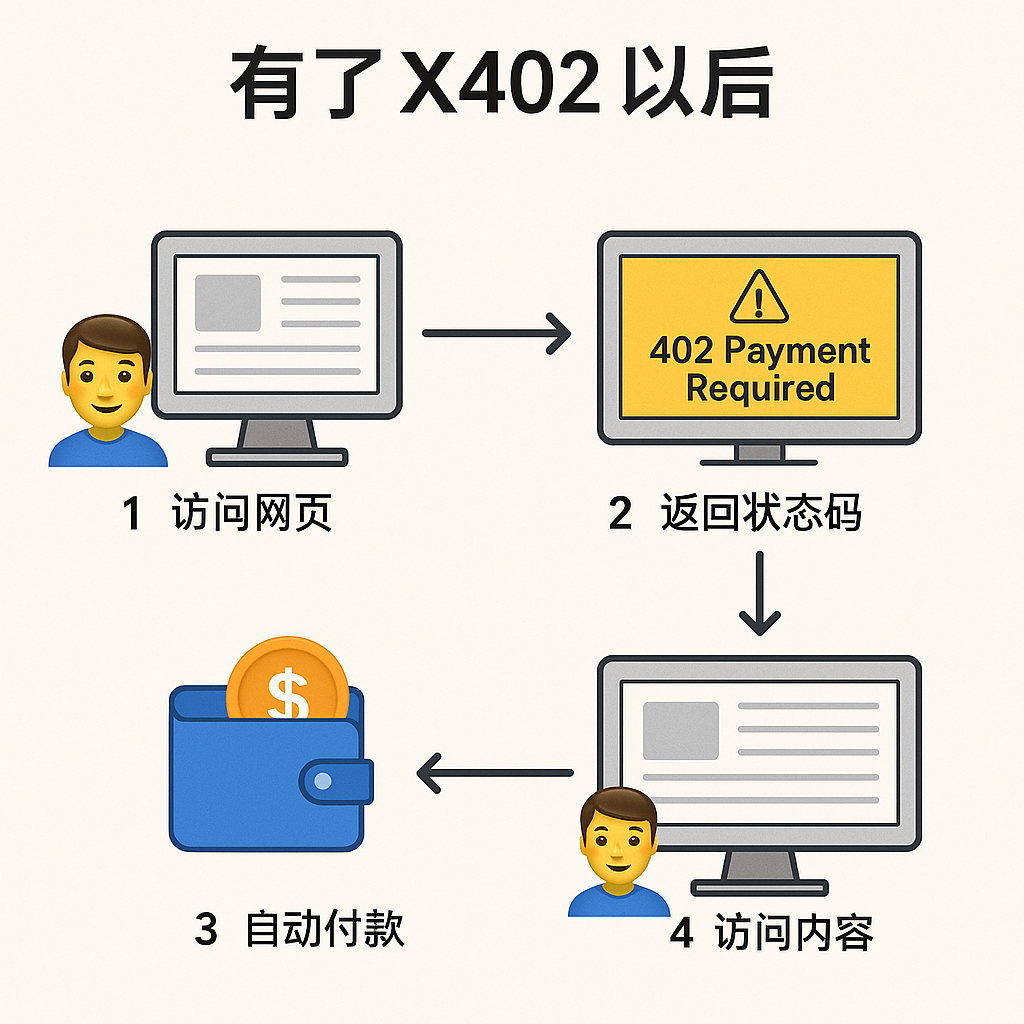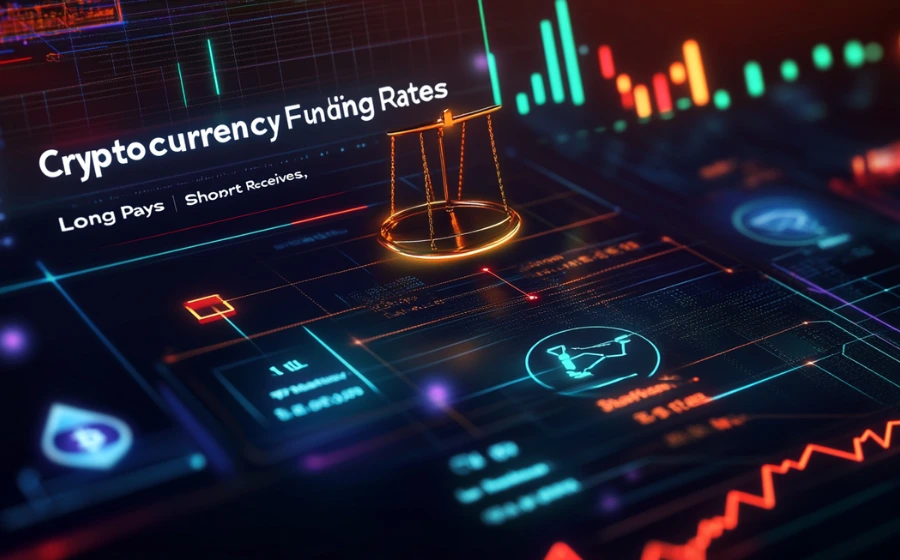
KEYTAKEAWAYS
- X402 enables direct, machine-to-machine crypto payments at the HTTP layer, removing human and centralized intermediaries from online transactions.
- It bridges Web2 and Web3, letting websites natively accept blockchain-based value transfers, similar to how HTTPS enabled secure data exchange.
- The protocol faces major technical, security, and adoption challenges, but represents a foundational shift in the AI + Crypto infrastructure narrative.

CONTENT
X402 bridges Web2 and crypto, enabling machines to make direct payments online without human help—redefining how value flows through the internet.

Let’s be honest — when I first saw people discussing X402, I was completely lost.
HTTP, API, protocol layers… for a liberal arts major like me, it felt like another language.
But after a bit of digging, I finally got it — and now I can’t stop thinking about how big this might become.
So, let’s break it down in plain English: what exactly is X402, why it’s so powerful, what challenges it faces, and how it ties into the crypto investment landscape.
WHAT IS X402?
X402 is an open protocol introduced by the Base team — the same people behind Coinbase’s Layer 2 network.
The idea started from a simple but profound observation:
“HTTP made information flow freely, but money is still trapped in the old system.”
In other words, the internet can easily transmit data, but not value.
You can read articles, stream videos, or call APIs — but when it comes to paying for something online, we still rely on credit cards, banks, and centralized gateways.
Coinbase’s vision with X402 is to change that.
They want to make it possible for the internet itself to understand payments — without accounts, credit cards, or middlemen.
HTTP AND API — IN SIMPLE WORDS
To understand X402, you just need to know two concepts: HTTP and API.
HTTP is the language your browser uses to “talk” to websites — like English, but for machines.
API, on the other hand, is how one program communicates with another.
For example, when your phone’s weather app shows today’s forecast, it doesn’t measure it directly.
Instead, it calls the Weather API, asking, “Hey, what’s the weather right now?”
That’s machine-to-machine communication.
Now, combine these two — HTTP and API — and you get the backbone of how the internet exchanges information.
Almost everything online runs on this model.
But here’s the issue: money doesn’t flow through this system.
WHY TRADITIONAL PAYMENT LOGIC IS BROKEN
Right now, if an AI agent or program wants to access a paid service online, it can’t do it by itself.
The typical process looks like this:
- A human user opens a website.
- The site asks for an account.
- You register, link your credit card, recharge, and generate an API key.
- Only then can the AI or app use the service.
This means the AI is completely dependent on human setup.
If its balance runs out, someone has to log in and top it up manually.
That’s not “autonomous intelligence” — that’s “AI on a leash.”
This is exactly where X402 steps in.
THE MAGIC OF X402
X402 allows machines to pay directly at the HTTP layer, without human involvement.
No accounts.
No credit cards.
No billing systems.
AI agents, bots, and APIs can make payments as naturally as humans — straight from one machine to another.
Here’s what that looks like in practice:
- Without X402: register → bind a card → generate API key → manually recharge when quota ends.
- With X402: AI makes a request → server responds “Payment Required: 0.01 USDC” → AI pays instantly → data is delivered immediately.
It’s seamless, automatic, and decentralized — just like how HTTPS made secure communication universal, X402 aims to make crypto-native payments universal.

AI + CRYPTO = THE BIGGER PICTURE
You can think of X402 as the “payment grammar” for the AI-Crypto world — the missing standard that allows machines to spend money by themselves.
Its value lies in bridging Web2 (the traditional internet) and Web3 (the blockchain world).
With X402, any website could accept crypto payments natively, just as easily as it accepts HTTP requests today.
Without blockchain, X402 wouldn’t work — because blockchain provides the infrastructure that enables secure and verifiable value transfer.
So, X402 isn’t just another crypto protocol — it’s a bridge connecting digital money with the fabric of the internet.
CHALLENGES AND RISKS
Of course, it’s not easy.
Integrating payment logic into the very structure of the internet comes with major technical and regulatory challenges.
First, the infrastructure must be universal — developers, browsers, and APIs all need to agree on the same payment standard.
Second, security is a major concern. Machines making autonomous payments require airtight safeguards to prevent abuse or theft.
Finally, there’s the adoption curve — just like HTTPS took years to become standard, X402 will need time, education, and trust.
POTENTIAL INVESTMENT ANGLES
So, if you’re thinking like an investor, what does X402 represent?
At its core, it’s part of the AI + Crypto narrative — infrastructure that enables value exchange between intelligent agents.
The most direct exposure would be through the Base ecosystem, since Coinbase is leading the initiative.
Projects focusing on AI payments, decentralized computing, or autonomous agent frameworks could also benefit indirectly from this paradigm shift.
But remember — this space is still extremely early.
Just as early internet protocols took years to mature, X402 will evolve through multiple iterations before reaching mainstream adoption.
CLOSING THOUGHTS
In a sense, X402 isn’t just about technology — it’s about rewriting the logic of the internet itself.
We’ve already made information flow freely; now we’re learning how to make value flow just as easily.
The idea that machines can “pay” each other without human help might sound futuristic, but that’s exactly how the next generation of the web — the machine economy — begins.
So next time you see people talking about X402, don’t think of it as another crypto buzzword.
Think of it as the moment when the internet learns how to handle money — natively, securely, and autonomously.












